The Quad (or ATV—all terrain vehicle) was created as a more stable 4 wheel version of the original ATC (All-terrain cycle) or trike three-wheeler. It is a bike-type off-road machine that has been used primarily in off-road dirt-type racing. It has also been used in oval dirt and in paved track racing and fits, despite its handle bar controls and saddle seat, the definition a small race car.
Quads are characterized today by a tube frame chassis, mid-engine and rear or four wheel drive. They utilize treaded, knobby, and even slick type tires mounted to an independent front and swingarm solid-axle rear suspension (usually). For off-road racing, the suspension is long-travel to enables the vehicle to travel over very rough terrain and jumps. For oval or pavement type racing the suspension has less travel and the chassis is lowered.
Racing events are held on desert, wooded, and other natural terrain as well as dirt ovals and paved tracks. Racing is held in many parts of the world.
Quad/ATV Contents
Numerous models of Quad are built by the manufacturers Honda, Kawasaki, Suzuki, Yamaha, Arctic Cat among others.
Building a quad can be approached in two ways: Customizing an existing model of Quad or building a brand new design from scratch.
If you opt to customize an existing quad through aftermarket components, it is recommended you have a good working knowledge of handling, chassis, suspension, and powertrain. Being able to understand the effects of modifications will enable you to choose the areas and components that provide the results you are looking for.
If you want to build a new quad design, then scratch-building will be the approach to take. You should be knowledgeable in handling, chassis, suspension, powertrain, and aerodynamic design. These five major areas of the quad design work as an integrated unit and the designer must have an understanding of how changes to one area affect the others. Design work is iterative, meaning re-designing areas based on new changes to another area. After the iterations are completed, the design will be complete and optimized.
Because of the varied environments where Quads can operate, knowledge of the terrain is important to ensure the vehicle will handle the demands of the surface and speed.
Suspension: Maximizing the contact patch of the tires with good suspension geometry is of key importance. Because of the long suspension travel there can be significant camber change. Some camber may be of benefit in cornering, but excessive camber will likely mean less traction.
Suspension, wheel and tire weights (Unsprung weight) affect the compliance of the suspension, which in turn affects handling, so keeping all these components as light as possible is an advantage. Springs and dampers (shock absorber) must be matched to the forces you expect the suspension to handle.
The suspension pickup point locations impact the chassis design.
Chassis: Providing openings to make internal components accessible for maintenance is important. If scratch-building the engine fit and mounts should be considered after determining the suspension/handling goals. Iterations may be required to match handling goals and engine positioning.
Powertrain: Weight distribution is heavily impacted by engine position. Intake, Cooling and exhaust need to be considered in relation to chassis design, bodywork and aerodynamics.
Aerodynamic: Unless raced at speeds above 60 mph, the aerodynamic effects will likely be secondary to handling and driving.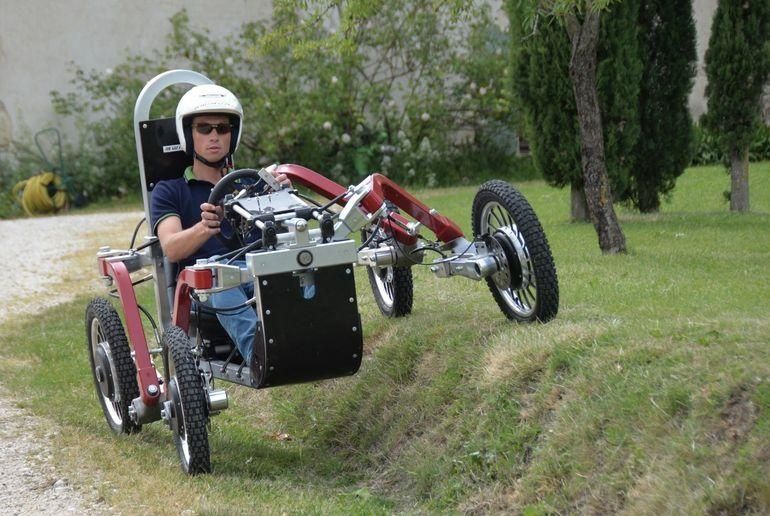
Safety: Consideration should be given to scenarios the Quad may encounter (ie. Roll-over, collision, etc) and protection added where the risk is sufficient.
If you intend to race under a sanctioning body, always read and understand the regulations of your chosen racing class before designing or building any race vehicle.
Learn the basics about race cars and race car design from our free online knowledge series
Download our free race car design aids to assist you designing your race vehicle.
In-depth books and learning resources we recommend for Quad/ATV design.
Join our forum to ask and find answers to your Quad/ATV design/construction questions.
If you are customizing an existing quad, the project will primarily involve replacement of stock parts.
If you are building from scratch, then ensuring the chassis is dimensionally accurate and straight is important as flaws in the structure will create handling issues via misaligned suspension. The use of a solid, flat and level build space is important. Jigs are often used in this case to ensure that structural tubing stays in alignment during welding/brazing.
The use of a solid, flat and level build space is important. Jigs are often used in this case to ensure that structural tubing stays in alignment during welding/brazing.
The builder should have solid joining and metal working knowledge and skills when fabricating the chassis/rollcage/suspension. While mild steel (1018/1020) is very forgiving, some metals are best welded using a specific method (mig/tig) and some require heat treatments before and following welding to restore their toughness and strength.
Having sufficient space for the chassis and body panel construction is important, as a cramped workshop can be difficult to work in. However, in the case of a quad, a small garage will likely suffice.
The tools to fabricate the chassis and bodywork can add considerably to the cost of your project if you don't already have a workshop, but borrowing or renting items is also an option.
Many components for customizing a stock Quad/ATV can be sourced from existing Quad/ATV manufacturers or the aftermarket. Depending on how many modifications are made, the costs can reach the equivalent of the original Quad price or higher.
Depending on how many modifications are made, the costs can reach the equivalent of the original Quad price or higher.
If you are constructing from scratch, the variety of available options becomes huge. You can pick and choose the ideal suspension and engine components from any manufacturer. Your job is then to integrate these components into a cohesive package.
If the Quad/ATV is to be used in racing, there will likely be a high standard of quality required. The costs may be significantly more than for someone who wants to zip around their back yard. Costs for a race quality machine usually include higher quality suspension, engine and safety components.
If you are customizing from a base quad, the effort will be around stock component upgrades. The time and effort depends on the complexity of the changes, but many upgrades can be weekend projects.
If you are scratch-building there will be significant effort in design and construction. There is however, an equally great satisfaction and sense of accomplishment at being one of the few people in the world who have built their own quad from the ground up!
There is however, an equally great satisfaction and sense of accomplishment at being one of the few people in the world who have built their own quad from the ground up!
Consumable costs depend on the seriousness of the racing—Tires probably form the single largest consumable expense along with engine rebuilds and suspension part replacements. A dirty or gritty working environment will usually translate into parts wearing out sooner.
Trailering required.
Quads, four-wheelers, ATVs - no matter what you call them, they're growing in popularity with teens and young adults. To keep riders safe, states have different laws that are important to know if you're headed for a vacation, a cross-country tour, or just a weekend in the outdoors.
To learn the ATV laws in your home state, click on the map or find your state below:
No person may operate an ATV with reckless disregard for the safety of persons or property, or off of an existing road, trail or route in a manner that causes damage to wildlife habitat, riparian areas, cultural or natural resources or property or improvements.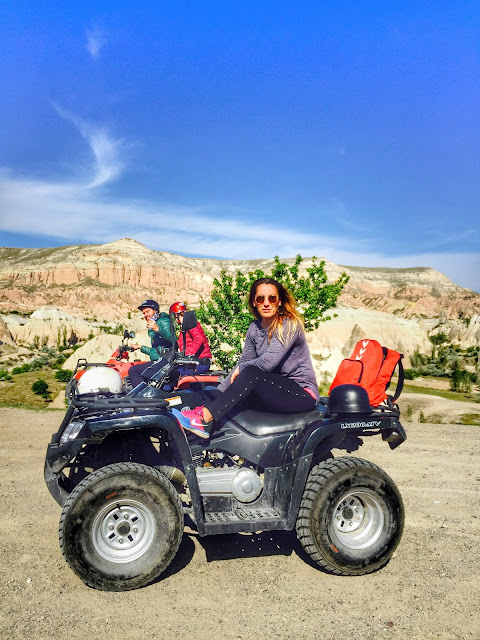
A person may drive an off-highway vehicle only on roads, trails, routes or areas that are opened as indicated in rules or regulations of a federal agency, this state, a county or a municipality.
A person may not operate an off-highway vehicle in a manner that damages the environment, including excessive pollution of air, water or land, abuse of the watershed or cultural or natural resources or impairment of plant or animal life, where it is prohibited by rule, regulation, ordinance or code.
Ariz. Rev. Stat. Ann. § 28-1174(A)-(H) (2016)
Necessary equipment: brakes adequate to control the movement of the vehicle and to stop and hold the vehicle under normal operating conditions, taillights and headlights if operated between one-half hour after sunset and one-half hour before sunrise, a muffler or other device that prevents sound above 96 decibels, a spark arrestor approved by the U.S. Department of Agriculture, and a safety flag if operated on sand dunes or areas designated by managing agency.
A person who is under eighteen years of age may not operate or ride on an off-highway vehicle on public or state land without protective headgear.
Does not apply to a private landowner or lessee performing normal agricultural or ranching practices while operating an all-terrain vehicle or an off-highway vehicle on the private or leased land in accordance with the landowner's or lessee's lease.
Ariz. Rev. Stat. Ann. § 28-1179(A), (B), (D) (2016)
Back to Top
ATVs must be registered.
Del. Code Ann. tit. 21, § 6801
ATVs may not be operated on a public highway, street, or sidewalk.
An ATV may be pushed across or along such public way provided it is in neutral or that the power train is otherwise disengaged. An ATV may be operated on a street or highway located within this State for a special event of limited duration, conducted according to a prearranged schedule only under permit from the governmental unit having jurisdiction.
An ATV may be operated on a street or highway located within this State for a special event of limited duration, conducted according to a prearranged schedule only under permit from the governmental unit having jurisdiction.
Del. Code Ann. tit. 21, § 6814
A person may not operate an ATV at a rate of speed which cannot be so controlled as may be necessary to avoid colliding with any person, vehicle or other conveyance.
Del. Code Ann. tit. 21, § 6815
A person may not operate an ATV while under the influence of alcohol, any drug, or a combination of drugs and alcohol.
Del. Code Ann. tit. 21, § 6816
A person may not operate an ATV during the period after sunset until sunrise without displaying a lighted headlight and lighted taillight.
Del. Code Ann. tit. 21, § 6817
A person may not operate an ATV in a manner to cause excessive damages or disturbances of the land, wildlife or vegetative resources, or endanger, disturb or annoy other persons or property.
Del. Code Ann. tit. 21, § 6819
A person may not operate an ATV unless such ATV is equipped with a spark arrestor type muffler, in good working order and in constant operation.
Del. Code Ann. tit. 21, § 6820
A person may not operate an ATV upon any property in either public or private ownership without the express permission.
Del. Code Ann. tit. 21, § 6821
A person may not operate a 2-wheel or 3-wheel ATV unless the operator and all passengers are wearing a protective helmet on their heads, with the chin straps properly fastened.
Del. Code Ann. tit. 21, § 6823
A person less than 12 years of age may operate an ATV only if under direct supervision of a person who is at least 18 years of age, or on lands controlled by the parent/guardian. Persons 12 years of age and older may operate an ATV without adult supervision.
Del. Code Ann. tit. 21, § 6824
Back to Top
No person under 18 years of age may operate a recreation vehicle unless he has successfully completed a recreation vehicle safety and responsibility course approved by the director of environmental law enforcement.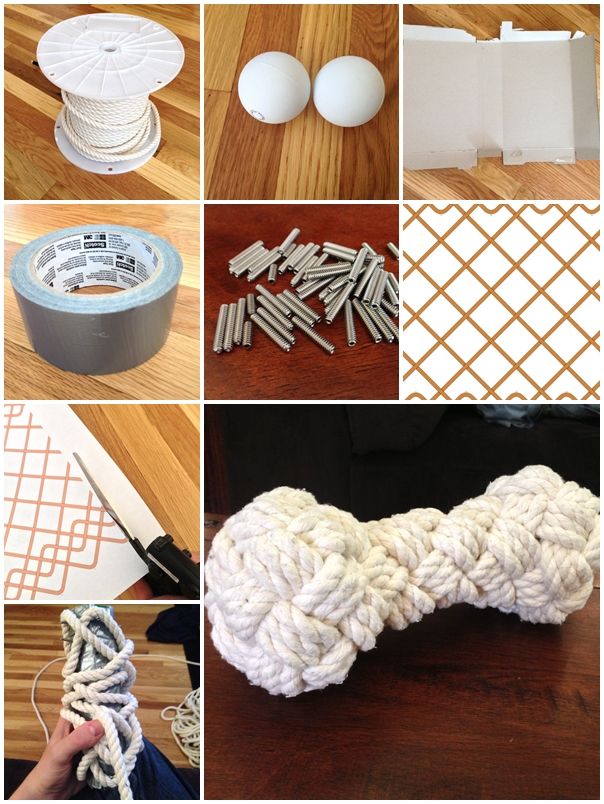 A parent or legal guardian of an operator of a recreation vehicle under 16 years of age shall participate in at least 1 session of the recreation vehicle safety and responsibility course or as required by the director.
Proof of the successful completion of the course shall be carried on the person of the operator while operating a recreation vehicle. Proof of an operator's successful completion of another state's equivalent recreation vehicle safety and responsibility course, as determined by the director, shall be valid in the commonwealth.
A parent or legal guardian of an operator of a recreation vehicle under 16 years of age shall participate in at least 1 session of the recreation vehicle safety and responsibility course or as required by the director.
Proof of the successful completion of the course shall be carried on the person of the operator while operating a recreation vehicle. Proof of an operator's successful completion of another state's equivalent recreation vehicle safety and responsibility course, as determined by the director, shall be valid in the commonwealth.
Mass. Gen. Laws Ann. ch. 90B, § 21
Registration required, to be renewed every 2 years. Registration must be displayed on vehicle in accordance with regulations.
Mass. Gen. Laws Ann. ch. 90B, § 22
ATVs must have one or more headlights, a red rear light, a red rear reflector, and adequate muffler.
ATVs must not emit noxious fumes or makes unusual or excessive noise.
No snow vehicle or recreation vehicle manufactured on or after January 1, 1998, shall be operated that produces a sound pressure level of more than 96 decibels when measured from a distance of 20 inches. No snow vehicle or recreation vehicle manufactured before January 1, 1998, shall be operated that produces a sound pressure level of more than 101 decibels when measured from a distance of 20 inches. Does not apply to a snow vehicle or recreation vehicle being operated on a privately-owned track or closed course as permitted by local municipal authority; provided, however, that a snow vehicle or recreation vehicle manufactured before January 28, 1985, and substantially maintained in its original or restored condition shall meet the sound and emission specifications in place at the time of its manufacture. Mass. Gen. Laws Ann. ch.
No snow vehicle or recreation vehicle manufactured before January 1, 1998, shall be operated that produces a sound pressure level of more than 101 decibels when measured from a distance of 20 inches. Does not apply to a snow vehicle or recreation vehicle being operated on a privately-owned track or closed course as permitted by local municipal authority; provided, however, that a snow vehicle or recreation vehicle manufactured before January 28, 1985, and substantially maintained in its original or restored condition shall meet the sound and emission specifications in place at the time of its manufacture. Mass. Gen. Laws Ann. ch.
Mass. Gen. Laws Ann. ch. 90B, § 24
No person may operate a snow vehicle or a recreation vehicle upon any state, county, city or town way in the commonwealth, nor on the plowed snowbanks of such ways, nor upon any other public way, nor upon the right-of-way limits of a controlled access highway, unless to cross those roads or under emergency conditions that renders regular motor vehicle traffic impossible. No person under 16 and one-half years of age may operate a snow vehicle or a recreation vehicle across or on a public way unless the operator holds a valid license or right to operate a motor vehicle or is directly supervised by a person 18 years of age or older.
Whenever it is impracticable to gain immediate access to an area adjacent to a public way where a snow vehicle or recreation vehicle is to be operated, said snow vehicle or recreation vehicle may be operated adjacent and parallel to the travelled portion of such public way for the purpose of gaining access to the area of operation.
Snow vehicles or recreation vehicles may be operated on any way that is not maintained or used for the operation of conventional motor vehicles.
No person under 16 and one-half years of age may operate a snow vehicle or a recreation vehicle across or on a public way unless the operator holds a valid license or right to operate a motor vehicle or is directly supervised by a person 18 years of age or older.
Whenever it is impracticable to gain immediate access to an area adjacent to a public way where a snow vehicle or recreation vehicle is to be operated, said snow vehicle or recreation vehicle may be operated adjacent and parallel to the travelled portion of such public way for the purpose of gaining access to the area of operation.
Snow vehicles or recreation vehicles may be operated on any way that is not maintained or used for the operation of conventional motor vehicles.
Mass. Gen. Laws Ann. ch. 90B, § 25
No person under 14 years of age may operate an ATV unless in preparation for while a participant in a sanctioned race or event that is supervised by a person 18 or older.
No person between 14 and 16 years of age may operate an ATV with an engine capacity greater than 90 cubic centimeters
A person between 14 and 16 years of age may operate an ATV with an engine capacity equal to or less than 90 cubic centimeters if directly supervised by a person 18 years of age or older.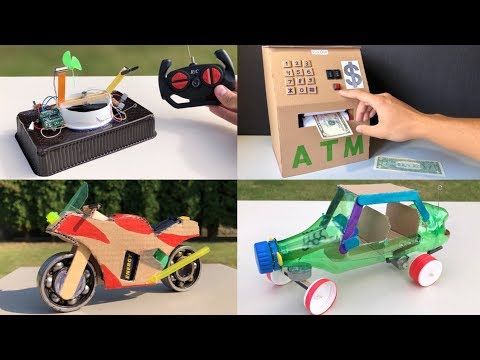 No person may operate an ATV on private property unless they are the owners or directly related to the owners, or without permission of the owners.
No person may operate an ATV on publicly-owned property except on trails marked and designated for use by such vehicles, or without the express permission of the owner.
No person may operate an ATV on private property unless they are the owners or directly related to the owners, or without permission of the owners.
No person may operate an ATV on publicly-owned property except on trails marked and designated for use by such vehicles, or without the express permission of the owner.
Mass. Gen. Laws Ann. ch. 90B, § 26 (West)
No person may operate an ATV under the influence of drugs or alcohol as defined by regulation.
Mass. Gen. Laws Ann. ch. 90B, § 26A (West)
Back to Top
N.H. Rev. Stat. 215-A:6 Operation of All OHRVs.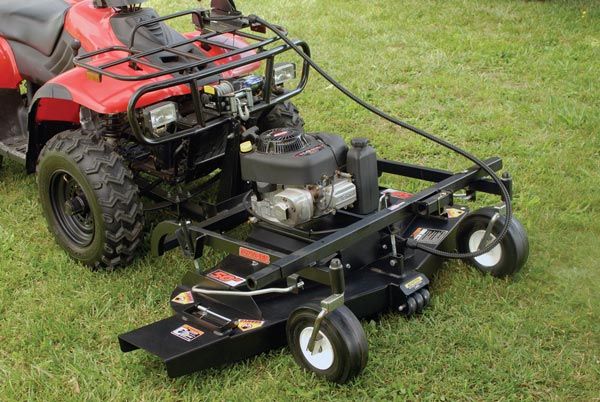
It is unlawful to operate any OHRV during the period from ½ hour after sunset to ½ hour before sunrise without displaying at least one lighted headlight and one lighted taillight.
No person may operate an OHRV upon any portion of the right of way of any public way including the traveled portion of a maintained public way except as provided.
No person may operate an OHRV at a speed greater than is reasonable and prudent under the existing conditions and without regard for actual and potential hazards. In all cases speed shall be controlled so that the operator will be able to avoid colliding with any person, vehicle, or object.
It is unlawful to operate any OHRV so as to endanger any person or damage any property.
No person may operate an OHRV within the limits of any railroad right of way where the rails are still intact unless otherwise posted, except in any emergency.
No person may operate an OHRV on the right of way of any public way classified as a class I highway and designated as an interstate highway, toll road or limited access highway.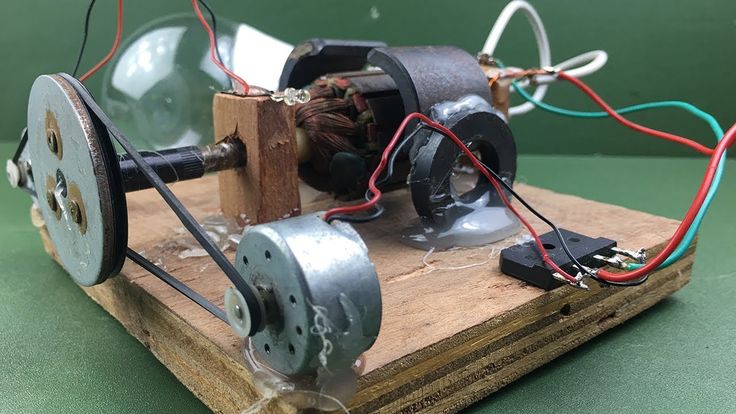 A person may operate an OHRV across any public way where the operation of said OHRV is not otherwise prohibited by law to cross the way, if the person has a driver's license or has completed the OHRV safety training course.
A person may operate an OHRV across any public way where the operation of said OHRV is not otherwise prohibited by law to cross the way, if the person has a driver's license or has completed the OHRV safety training course.
215-A:9 Limitations of OHRV Operation on Class I, II, and III Highways.
Highway crossings for established OHRV trails may be granted.
No direct crossing of interstate highways, divided highways, or toll roads shall be permitted.
When travel by conventional motor vehicles is not possible during a period of emergency declared by the appropriate authority having jurisdiction, an OHRV may be operated on any portion of an interstate highway, toll road, limited access highway, public highway or any other restricted area, provided that the operator of said vehicle has received the specific authority of an officer authorized to enforce the provisions of this chapter to so operate.
215-A:13-a Protective Headgear.
No person under the age of 18 may operate any OHRV within this state without wearing eye protection and protective headgear.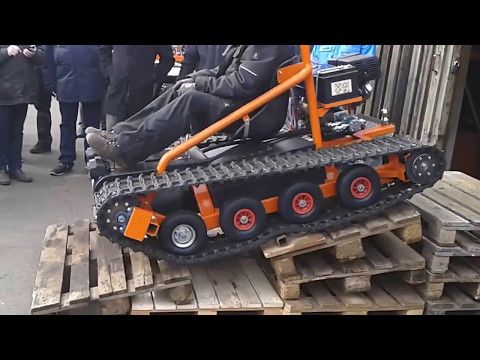
215-A:14 OHRV Required Equipment.
At least one, but not more than 2 headlights, all in working order, when operating at any time during the period from ½ hour after sunset to ½ hour before sunrise.
One or more rear taillights, all in working order, when operating at any time during the period from ½ hour after sunset to ½ hour before sunrise.
Adequate brakes in good working order sufficient to control the vehicle at all times. The brakes must be capable of stopping the vehicle within 40 feet at 20 miles per hour, or locking the wheels or track to a standstill.
The current registration decal affixed to the OHRV as required by this chapter.
Mufflers and an exhaust system which comply with requirements.
Any sled or trailer towed behind an OHRV must be equipped with reflectors and a rigid hitch such as a tow bar.
215-A:21 Registration.
Registration and decals required pursuant to regulation.
215-A:29 OHRV Operation and License.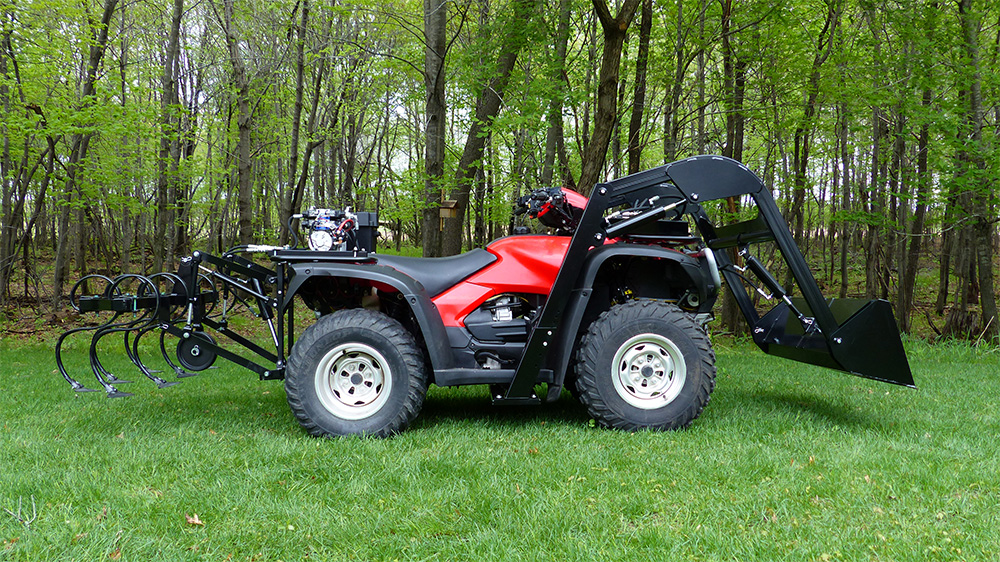
If under 14 years of age, must be accompanied at all times by a person at least 18 years of age.
If 12 years of age or older, must have successfully completed the snowmobile or OHRV training program, or be licensed to drive a vehicle.
Any person operating an OHRV along the traveled portion of a public highway, where permitted, shall be required to be licensed to drive. Or, any person at least 12 years of age, who has successfully completed an approved snowmobile or OHRV training program, operating an OHRV along the traveled portion of a public highway, where permitted, who is not licensed to drive shall be accompanied at all times by a person who is licensed to drive, and who is at least 18 years of age.
Operators under 18 may not carry passengers.
Back to Top
N.J. Stat. Ann. § 39:3C-3. Registration; necessity; fee; expiration.
Except as otherwise provided, no snowmobile, all-terrain vehicle, or dirt bike shall be operated or permitted to be operated on or across a public highway or on public lands or waters of this State unless registered.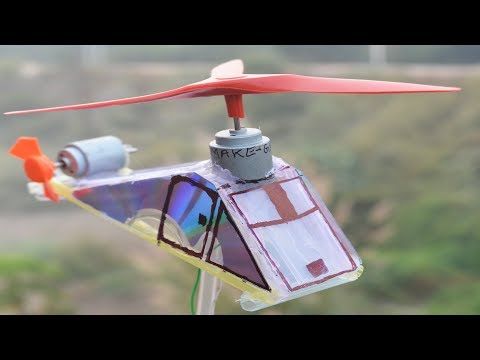 $50 registration fee, renewed yearly.
$50 registration fee, renewed yearly.
39:3C-16. Minimum age to be operator.
Persons under 14 prohibited to operate any snowmobile, all-terrain vehicle, or dirt bike on public lands or waters or across a public highway.
A person less than 16 years of age may not operate on public lands or waters or across a public highway of this State an all-terrain vehicle with an engine capacity greater than 90 cubic centimeters.
A person less than 18 years of age may not operate a snowmobile, all-terrain vehicle, or dirt bike registered in this State on public lands or waters or across a public highway of this State unless the person has completed a safety education and training course.
39:3C-17. Prohibition of operation on highways, streets and right-of-way limits; exceptions.
No person may operate an ATV upon limited access highways or within the right-of-way limits thereof.
No person may operate an ATV upon the main traveled portion or the plowed snowbanks of any public street or highway or within the right-of-way limits thereof except as follows:
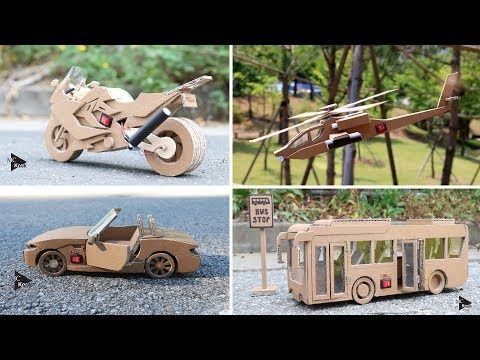
39:3C-18. Prohibition of operation on private property without consent.
No person may operate an ATV on private property without consent of the owner of the property and the person who has a contractual right to the use of the property.
39:3C-19. Unlawful acts.
It is prohibited for a person to operate or ride as a passenger on any snowmobile, all-terrain vehicle, or dirt bike without wearing a protective helmet.
ATVs must have headlights, taillights, brakes, and a proper muffler.
Any person may not operate an ATV during the hours from 1/2 hour before sunset to 1/2 hour after sunrise without having lighted headlights and lighted taillights.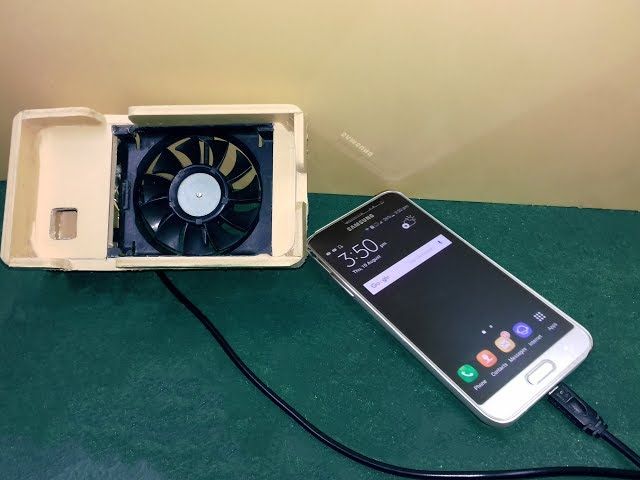 Any person to operate an ATV upon railroad or right-of-way of an operating railroad, except railroad personnel in the performance of their duties.
Any person to operate an ATV upon railroad or right-of-way of an operating railroad, except railroad personnel in the performance of their duties.
39:3C-20. Liability insurance .
required, subject to regulations.
39:3C-24. Equipment.
At least one white or amber headlamp having a minimum candlepower of sufficient intensity to reveal persons and vehicles at a distance of at least 100 feet ahead during hours of darkness under normal atmospheric conditions.
At least one red taillamp having a minimum candlepower of sufficient intensity to exhibit a red light plainly visible from a distance of 500 feet to the rear during hours of darkness under normal atmospheric conditions.
A brake system in good mechanical condition.
Reflector material of a minimum area of 16 square inches mounted on each side of the cowling.
An adequate muffler system in good working condition.
Back to Top
Pa. Cons. Stat. § 7711.1. Registration of snowmobile or ATV, § 7712.1. Certificate of title for snowmobile or ATV.
Cons. Stat. § 7711.1. Registration of snowmobile or ATV, § 7712.1. Certificate of title for snowmobile or ATV.
All ATVs must be titled and registered.
Every ATV must have its own numbered plate, and you must renew the registration every two years.
§ 7721. Operation on streets and highways.
Generally, it is unlawful to operate a snowmobile or an ATV on any street or highway which is not designated and posted as a snowmobile or an ATV road by the governmental agency having jurisdiction.
A snowmobile or an ATV may be operated on highways and streets:
An ATV may make a direct crossing of a street or highway.
§ 7724. Operation on private or State property.
No person may operate a snowmobile or an ATV on State-owned property except on clearly marked and previously designated snowmobile or ATV routes or as expressly permitted by the Commonwealth.
§ 7725. Operation by persons under age sixteen.
No one under the age of 8 can operate an ATV on state-owned land.
No one between the ages of 8 and 15 may operate an ATV unless it is on a parent's or guardian's land, or the individual has participated in an ATV safety training course and has a safety certificate, of if they are under direct supervision of a certified ATV safety instructor during the course.
No one under the age of 16 may cross a highway or ride on a designated road unless they have a safety certificate and are accompanied by an adult age 18 or older.
§ 7726. Operation in safe manner.
No person may operate a snowmobile or an ATV in any of the following ways:

Operators and passengers must wear helmet.
§ 7727. Additional limitations on operation.
It is unlawful to operate or ride in any snowmobile or ATV with any bow and arrows or with any firearm in his possession unless it is unstrung or unloade, or to
drive or pursue any game or wildlife with a snowmobile or an ATV.
§ 7730. Liability insurance.
A snowmobile or ATV for which registration is required under this chapter must have liability insurance coverage for the snowmobile or ATV issued by an insurance carrier authorized to do business in this Commonwealth. This subsection does not apply to limited registrations.
§ 7741. Head lamps and tail lamps.
Every snowmobile or ATV operated during hours of darkness must display a lighted head lamp and tail lamp. The lights shall be in operation during the period of from one-half hour after sunset to one-half hour before sunrise and at any time when, due to insufficient light or unfavorable atmospheric conditions caused by fog or otherwise, other persons, vehicles and other objects are not clearly discernible for a distance of 500 feet ahead. The head lamp must display white light of sufficient illuminating power to reveal any person, vehicle or substantial object at a distance of 100 feet ahead.
The tail lamp must display a red light plainly visible during darkness from a distance of 500 feet.
The head lamp must display white light of sufficient illuminating power to reveal any person, vehicle or substantial object at a distance of 100 feet ahead.
The tail lamp must display a red light plainly visible during darkness from a distance of 500 feet.
§ 7742. Brakes.
It is unlawful to operate an ATV which is not equipped with a braking system which may be operated by hand or foot, capable of producing deceleration of 14 feet per second on level ground at a speed of 20 miles per hour.
§ 7743. Mufflers and noise control.
It is unlawful to operate a snowmobile or an ATV which is not equipped at all times with a muffler in good working order which blends the exhaust noise into the overall snowmobile or ATV noise and is in constant operation to prevent excessive or unusual noise.
Back to Top
Currently registered off-highway vehicles may be operated on public land, trails, streets, or highways that are posted by sign or designated by map or description as open to off-highway vehicle use by the controlling federal, state, county, or municipal agency.
Utah Code Ann. § 41-22-10.1
ATVs operated on public land must be registered.
§ 41-22-3
ATVs may not be operated along, across, or within the boundaries of an interstate freeway or controlled access highway.
§ 41-22-10.2
A person may not operate an off-highway vehicle upon any street or highway, not designated as open to off-highway vehicle use, except:
§ 41-22-10.3
An off-highway vehicle must be equipped with: brakes, headlights and taillights when operated during hours of darkness, a noise muffling device, spark arrestor, and safety flag when operated on sand dunes.
§ 41-22-10.7
A violation of the above sections is now an infraction.
Persons under 8 years of age may not operate an ATV, unless participating in a sanctioned race or organized practice and under the direct supervision of an adult, where there are emergency personnel and an ambulance service at the race or organized practice ready to administer medical services. § 41–22–29
A person under the age of 18 must wear protective headgear.
§ 41-22-10.8
An operator and passengers of off-highway implements of husbandry are exempt.
§ 41-22-10.8
Need more information on state laws? Learn more about the laws where you live.
Back to Top
Need more information on state laws? Learn more about the laws where you live.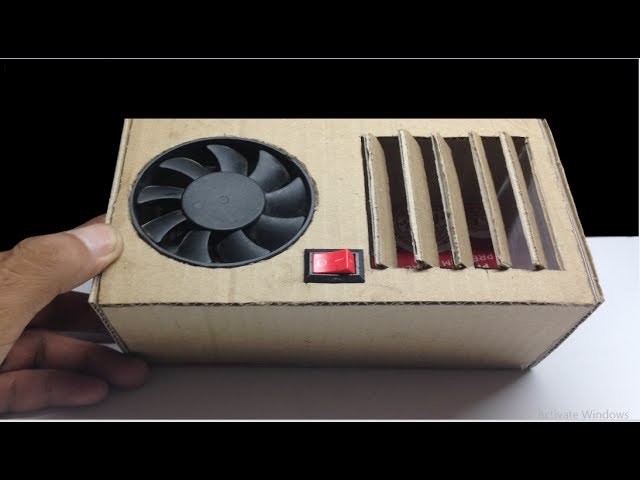
Note: Our attorneys are licensed to practice law in Pennsylvania, West Virginia, Ohio, Maryland, and Virginia. This information is not intended to solicit clients for matters outside of the states of Pennsylvania, Ohio, West Virginia, Maryland, and Virginia, although if you are injured in an accident, we have relationships with other personal injury attorneys and lawyers throughout the United States.
Articles
20 Feb
At first glance, it may seem that assembling a homemade ATV is not an easy task. In fact, everything is much simpler than it seems, with the necessary parts and tools. An all-terrain vehicle of this type is usually constructed from parts that can be found on any unused motorcycle that is in decent working order.
To assemble the machine yourself, you may need the following tools:
• Welding machine.
• Bulgarian.
• Good set of ring and socket wrenches.
• Other small tools such as pliers and screwdrivers.
To assemble the ATV, you will need a small room with good lighting and heating. If you assemble in the summer, you can sit under a canopy.
As a power unit for a homemade all-terrain vehicle, engines from Soviet-made motorcycles such as the Ural or Dnepr are suitable. For lighter and more maneuverable equipment, you can use units from motorcycles such as "Java" or "IZH", which were equipped with single-cylinder two-stroke engines.
To simplify the design of the future ATV, together with the engine it is better to use the same transmission and drive with which they were originally equipped. To design a machine with all-wheel drive, you will need to install an additional gearbox. This is extremely rarely used in home-made devices, since it will be difficult to implement an additional node without a sharp increase in weight at home.
The frame for a homemade machine is usually made by yourself from scratch. As a material for the frame, you can use blanks from an old motorcycle. The pipes from which they are made are light in weight and have the necessary strength and flexibility. In extreme cases, you can choose the material yourself. Here the main parameter will be weight. Excessively thick pipes or profiles will make the ATV very heavy and unbearable for fast and maneuverable riding.
Shock absorbers with springs from the same motorcycles can be used as suspension. The suspension itself is made in the form of the letter "A", and is movably fixed on the frame. Shock absorbers and springs should be selected in such a way that they can withstand the weight of the future car, and provide a smooth ride with good handling on bumps and pits.
Partially motorcycle steering can be used, with the addition of two-wheel drive. The drive is carried out by adding levers and ball joints to the design, which can be borrowed from the car. The main task of steering is precise and comfortable steering.
The drive is carried out by adding levers and ball joints to the design, which can be borrowed from the car. The main task of steering is precise and comfortable steering.
ATV wheels are best used from inside the vehicle, as they are wider and will allow for more cross-country ability. The diameter of the wheels must be calculated in such a way that a home-made ATV can develop sufficient speed, and also have a harmonious appearance.
Attachments, gas tank and controls can be mounted on a motorcycle frame that is structurally connected to an ATV frame. In this case, special attention should be paid to the stability of the all-terrain vehicle, its appearance and the convenience of the driver.
Do not forget about installing all the necessary lighting and outdoor signaling devices on a homemade ATV. The headlights, taillights and direction indicators can be used from the same motorcycle from which everything else was taken.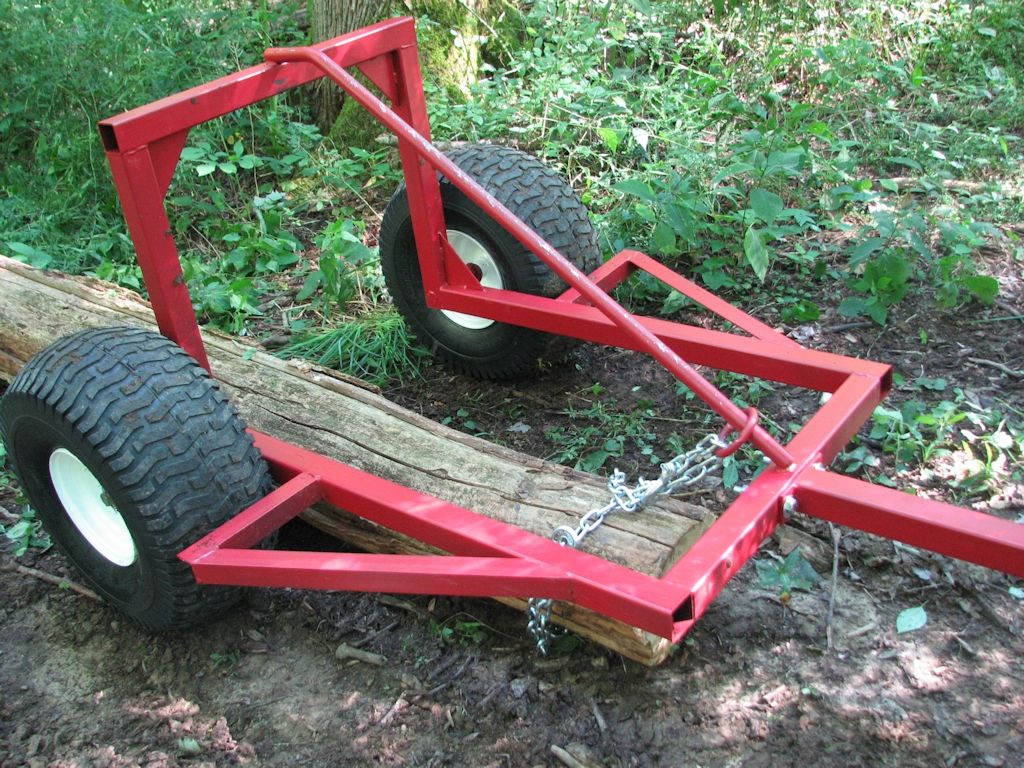
Look how homemade ATV is in action!
The popularity of four-wheeled vehicles is steadily growing - today on the roads almost every day we meet people rushing at high speed on roaring ATVs. This fun is not for everyone. But the quad can do it yourself .
The idea to build a quad bike with your own hands comes from many fans of auto-moto technology. And if you figure it out, then this is not a very bad option to occupy yourself with something interesting and, as a result, get your personal unique ATV . Yes, and it will be much more convenient and pleasant to ride it, since you yourself are its author and creator, and you also know how each of its nodes is built, which is important and very useful when repairing or modifying. First you need to decide on the type of ATV and its main dimensions.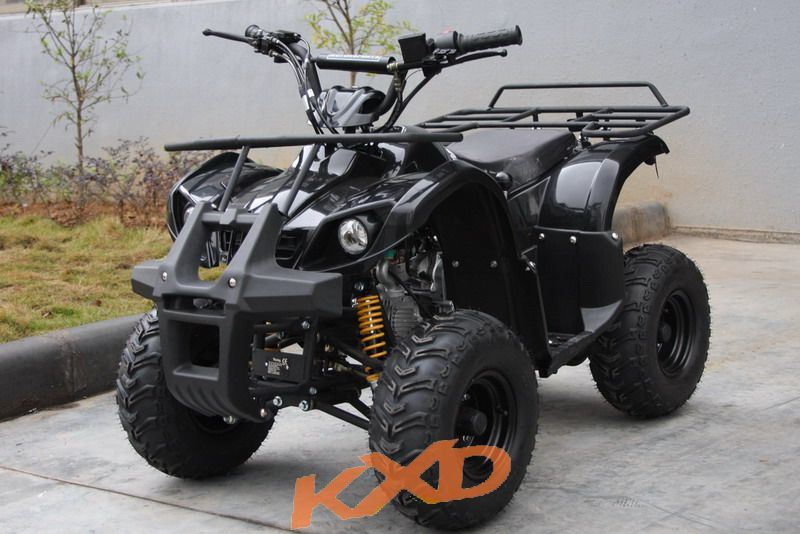 This will determine the frame and suspension design of your ATV .
This will determine the frame and suspension design of your ATV .
Here is a translation of the instructions for making homemade ATV, drawings and specifications
Introduction .
The main purpose of this manual is to provide you with the necessary specifications, bill of materials, calculations, drawings, and all the information you need to build your own ATV.
The authors of the manual have tried to simplify this project as much as possible, but you will need basic knowledge in the field of engineering and mechanics, as well as skills in working with hand tools and a welding machine.
You may also be interested in making a home-made children's electric card - description at the link.
The materials used or changes in the calculations are completely your choice, you can use other materials than those recommended by us. However, at the same time, you bear full responsibility for the result. For example, the material we chose for the Main Frame is 1" x 1" square .083. We have tested this material on several models and it has proven to be reliable and easy to work with.
For example, the material we chose for the Main Frame is 1" x 1" square .083. We have tested this material on several models and it has proven to be reliable and easy to work with.
We will show you step by step how to make a frame in your own garage without any special tools.
Frame .
The main part of not only ATVs , but also any equipment is the main frame.
Frame Spec:
Material: 1" x 1" Square .083
Overall Length: 50"
Overall Height: 29" (Ride Level)
Overall Height: 33" (Handle Level)
Wheelbase: 41"
Wheelbase: 27 ¾"
Tire Inclination: 14 degrees
Front Wheels: 41" (outer edge of tire to outer edge of other tire)
Rear Wheels: 44" (outer edge of tire to outer edge of other tire)
Ground Clearance: 7" (with 16" rear wheels)
Calculate the speed using the formula:
The total speed is 33.91 miles per hour or about 54 kilometers per hour.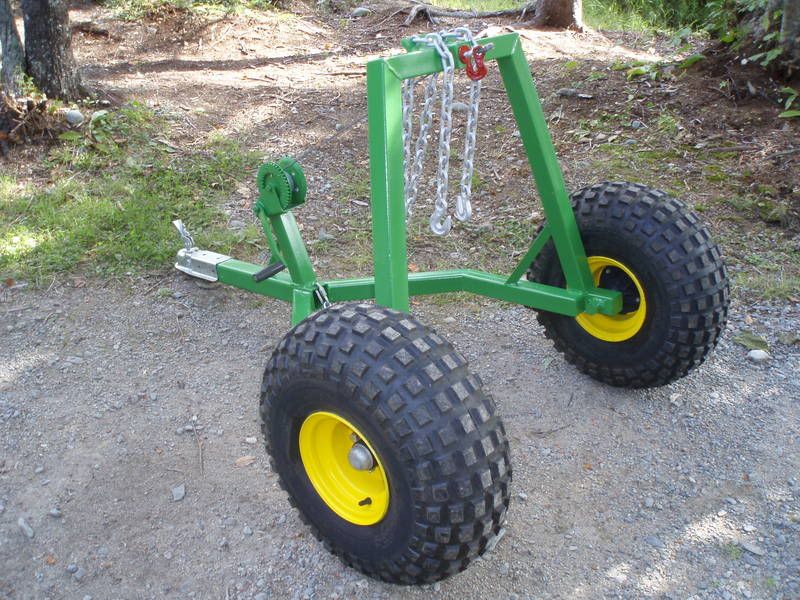
Drawing :
Note:
Main Frame
Swing Arm for rear suspension
Frame overview:
Materials:
Square profile:
9.75 meters - 1" x 1" square profile .083
Tubes:
1.22 meters - 1" x 0.065 22 meters - 3/4" x .065
0.3048 meters - 3/4" x .125
0.915 meters - 5/8" x .125
0.61 meters - 1/2" x .083 6061 aluminum pipe T6
Rolled:
0.61 meters - 1" x 3/16"
0.915 meters - 1 1/4" x 1/4"
0.61 meters - 5" x 1/8" (this plate is needed for engine mounts and bearing brackets)
After you assemble and weld the metal profile, pipes and all other details of ATV according to the scheme and attach to the wheel frame, you should get something like shown in the photo
you will need spring shock absorbers for the rear and front suspensions.
Motor :
The motor must now be securely fastened to the frame.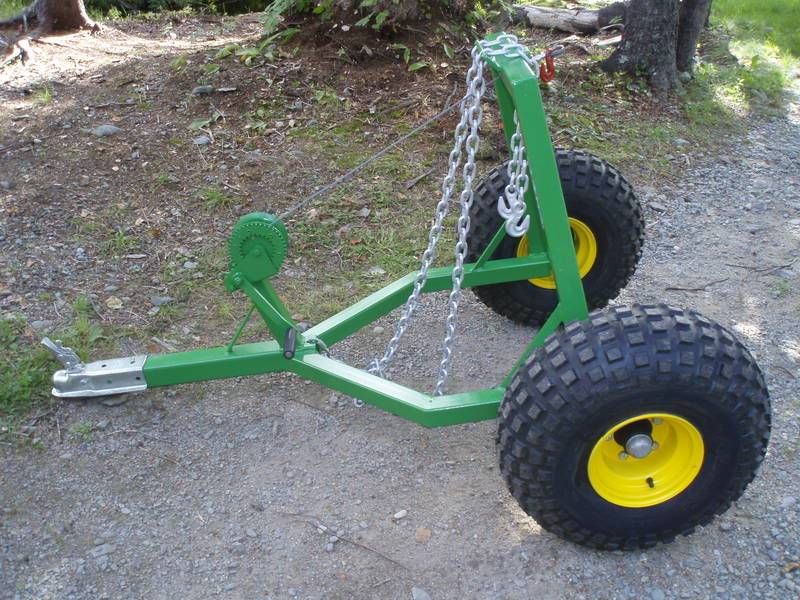 The engine is best used from a moped. After screwing it to the frame, connect the motor shaft to the gear on the rear axle with a simple chain drive. After that, bring all the engine controls to the handlebars and fasten the pedals and levers to your frame.
The engine is best used from a moped. After screwing it to the frame, connect the motor shaft to the gear on the rear axle with a simple chain drive. After that, bring all the engine controls to the handlebars and fasten the pedals and levers to your frame.
Body kit :
Body parts or ATV body parts are best and easiest to make from fiberglass. After manufacturing on wooden or plasticine ingots, the elements of the aerodynamic body kit are adjusted relative to each other, polished and then painted in the desired color, after which they are already attached to the ATV frame. Ideas, as well as some ready-made elements, for example, from a broken car (of course, if you have them available), options for an external body kit can be taken from any production models.
Important:
Remember that in order to use the ATV on public roads, you will need to register it with the traffic police, where it is necessary to register any vehicles with an engine over 50 cc and a maximum design speed over 50 km/h.